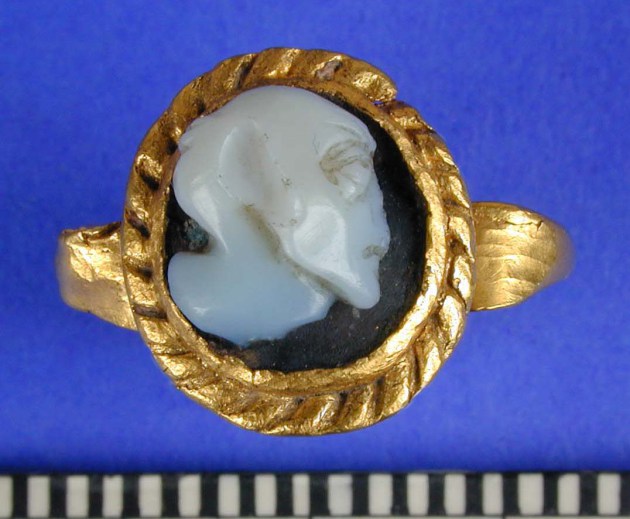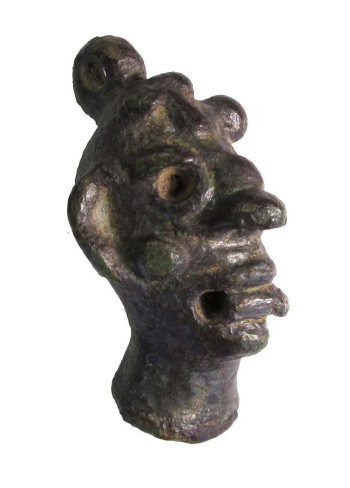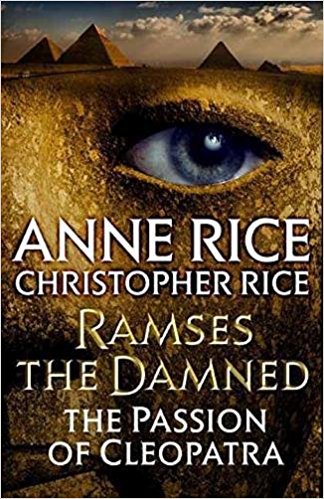In 1908, a gold finger ring was discovered in Lincoln featuring a charismatic and unusual cameo – a grotesque human head in profile.
The ring was donated to The Collection museum in September 1914 (LCNCC : 1914.725) by the Lincoln architect William Scorer (1843-1934) but the exact findspot is unknown. Perhaps the ring was found on the site of one of his building projects?

Grotesque ring. Image copyright The Collection: Art and Archaeology in Lincolnshire
The gold ring, measuring 24mm in diameter and dating to the 3rd Century, prominently features a black and white cameo made from chalcedony. The cameo depicts a male head with an elongated face and pointed chin, a long, bulbous cranium with a small lock of hair, large eyes turned upwards, and a small and stern mouth. The translucent whiteness of the image, the deeply carved jaw and strange angle to the neck combine to give the portrait a strange, alien appearance. Henig (1970) described the face as that of an ‘old man’, and Hutchinson (1986) as a ‘bearded male head’. Personally, I cannot see any evidence of a beard on the jaw line, but the figure does seem male. The age is surely difficult to confidently discern in such a deliberately grotesque depiction.
Two potential parallel cameos are sadly both from auctions and lack provenance (though are not likely to be British in origin). The first is a frontal depiction of a male face in a white stone, and features a very similar lock of hair to the Lincoln ring. The second is cruder in depiction, but features a face in profile with upturned eyes, again bearing a strong resemblance to our Lincoln example.
The key questions are therefore what the ring depicts, and where and why it might have been worn. Such an image cannot have been a personal portrait. Grotesque images are not uncommon in the Greek and Roman world, appearing for example on jewellery and small statuettes (see here for some examples). One example from Lincolnshire is a copper alloy steelyard weight from Osbournby, depicting a male figure with bulging eyes, a prominent nose and ears, and what appear to be large boils.

Grotesque steelyard weight from Osbournby. Image copyright Portable Antiquities Scheme
One theory is that the ring depicts a theatrical mask, perhaps that of a mime artist. The consistencies with the other cameos above suggests a defined character being portrayed, the characteristics of which – the lock of hair, bony appearance and upturned bulging eyes – would have been recognisable to contemporary viewers.
Depictions of the theatre and revelry inevitably draw connections with the god Bacchus and his entourage, of which actors and performers were a central element. Plays and performances were integral to the worship of the deity and Hutchinson (1986) included such imagery in her corpus of evidence of the Bacchic cult in Britain. I have written about objects with Bacchic connections from Lincolnshire before, and this may be another item to add to that list.
Whether this ring represents something worn by a performer, purchased as a souvenir after a performance, or worn as an item of religious devotion is impossible to say, but none of these options are mutually exclusive. The question I asked in the title is a deliberately misleading one – the ring does not have to be either entirely theatrical or religious in nature, as the two were not mutually exclusive in the ancient world. It is one of the dangers inherent when interpreting the past that we apply our own cultural assumptions to the evidence.
References
Henig, M. 1970. A New Cameo from Lincolnshire. Antiquaries Journal Vol L
Hutchinson, V. J. 1986. Bacchus in Britain: The Evidence for His Cult. BAR British Series 151
Advertisements Share this:





